Anatomy of an Engagement Ring
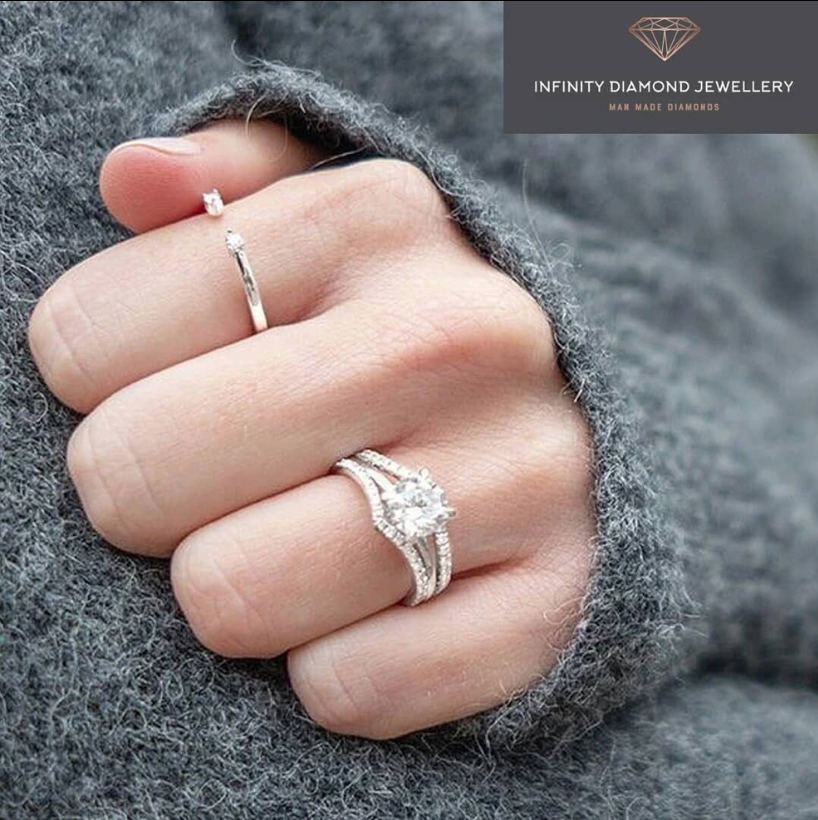
Buying your engagement ring is one of the most exciting purchases of your life, but some of the technical descriptions can be a bit confusing – unless you’re a jeweller! While some are obvious, others are harder to work out so, Emmeline Smith from Infinity Diamond Jewellery shares her quick guide to help get you up to speed with the basics.
The main parts of a ring

Shank or band – is simply the part of the ring that wraps around your finger, in any metal and is the part that will bear any hallmark.
Side stones – also referred to as ‘accent stones’ and are usually smaller gems set either side of the centre stone. They can be the same or different type of gem, in any cut or size to complement and draw attention to the main stone and add a bit of extra dazzle!
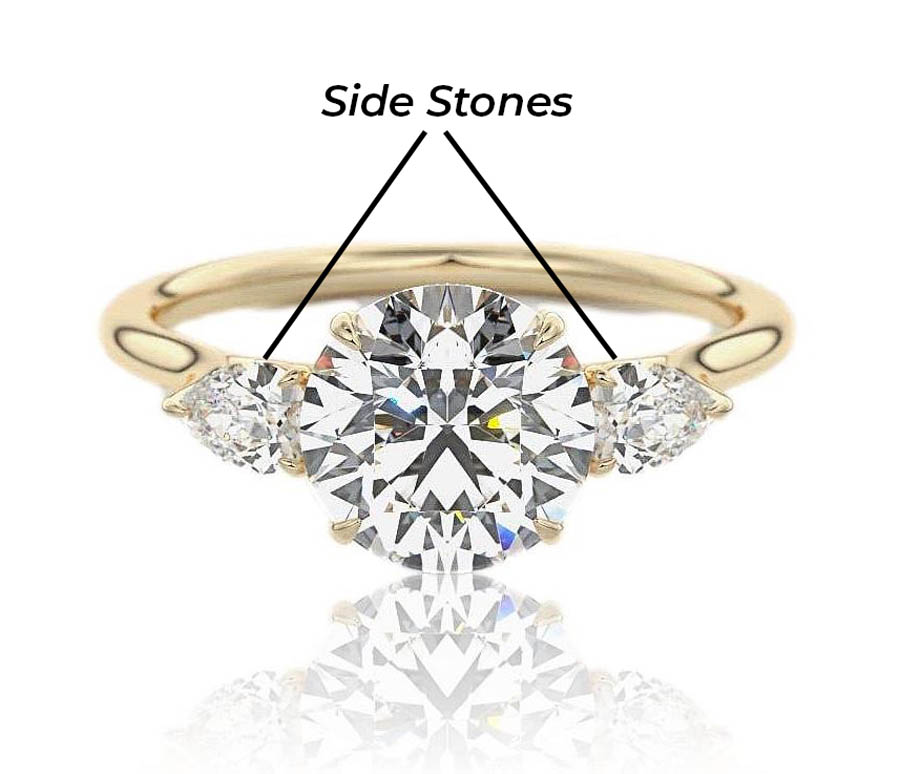
Centre stone – is quite self explanatory! It’s the main and usually the biggest stone in the ring.
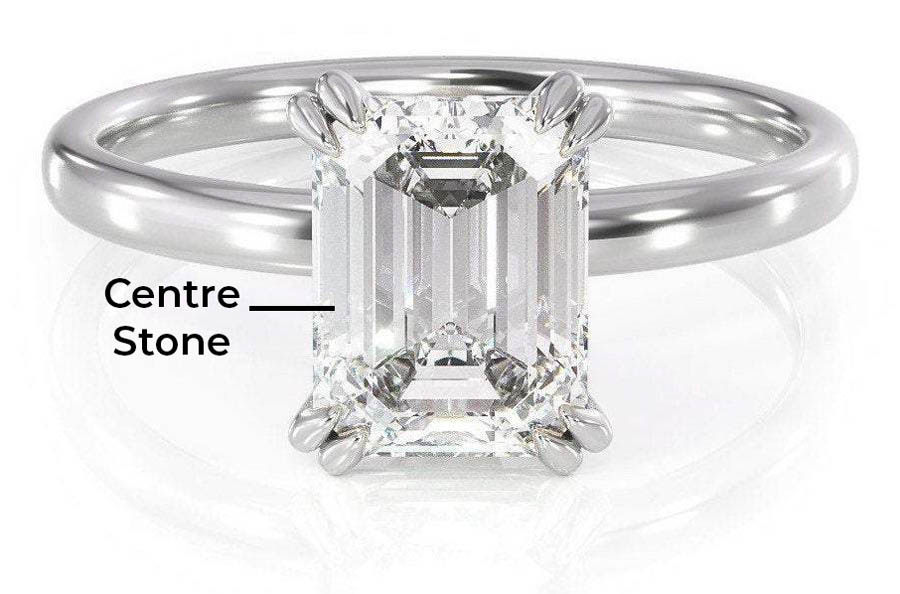
Head – situated at the top of the ring, the head holds the centre stone in place. There are various different styles and the one you pick will make a big difference to the appearance of the ring.

Engagement Rings
Prongs – also referred to as ‘claws’, these are situated on the head of the ring and are the thin metal strips that hold the gem in place. The amount of prongs varies are usually 4 or 6 and the ends are slightly bent inwards to securely hold the stone.
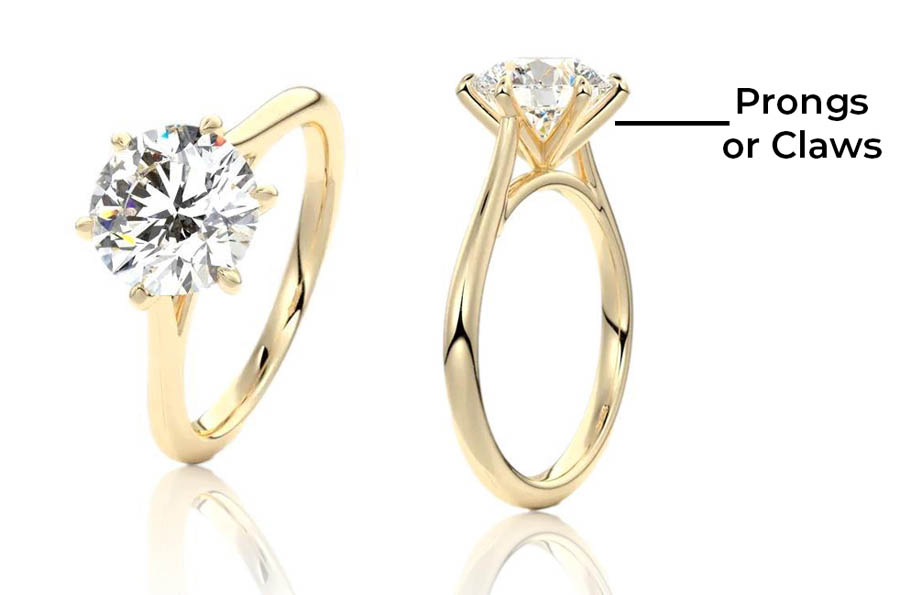
Shoulders – these are the top two sides of the band, just below the stones. Some shoulders change width as they near the stone setting. They can be super simple or intricate, adorned in stones.
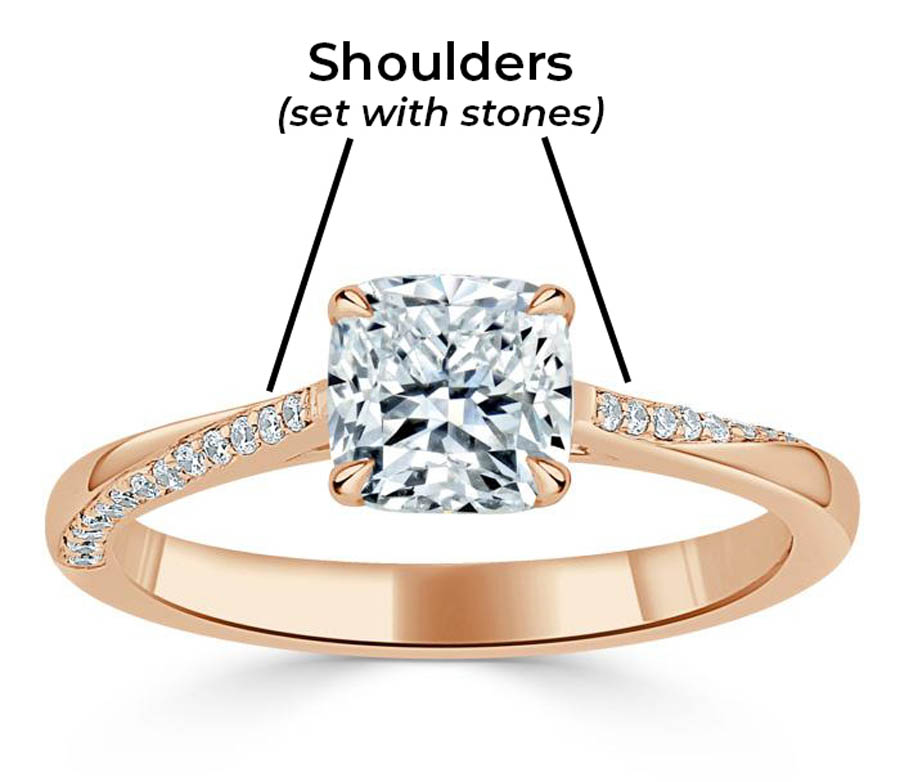
Engagement Rings
Other useful terms
Mount or setting – The setting or mounting refers to how the gems are set onto the metal band.

Oval cut, art nouveau style lab-diamond engagement ring – prong setting
Split shank – is when the shank of the ring divides at the shoulders as it approaches the centre stone. The split leaves a visible gap and can give the illusion that the centre stone is bigger than it is.
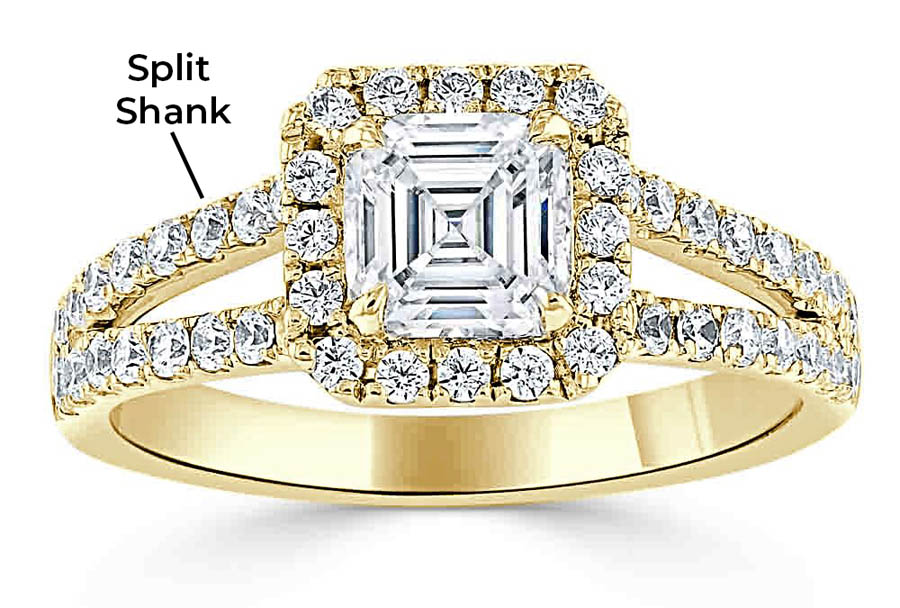
Asscher cut, moissanite engagement ring, with split shank
Bezel – in a full bezel setting, the centre stone is set within a thin metal rim, which completely surrounds the stone, holding it in place. A partial-bezel setting covers just two sides of the stone.

Oval cut, three stone moissanite bezel engagement ring
Pavé (or micro-pavé) – this is French word for paved and means the surface of jewellery is literally paved with a series of small gems set close together, totally covering the metal below. This ensures the optimum opportunity for sparkle, ensuring every surface glimmers.
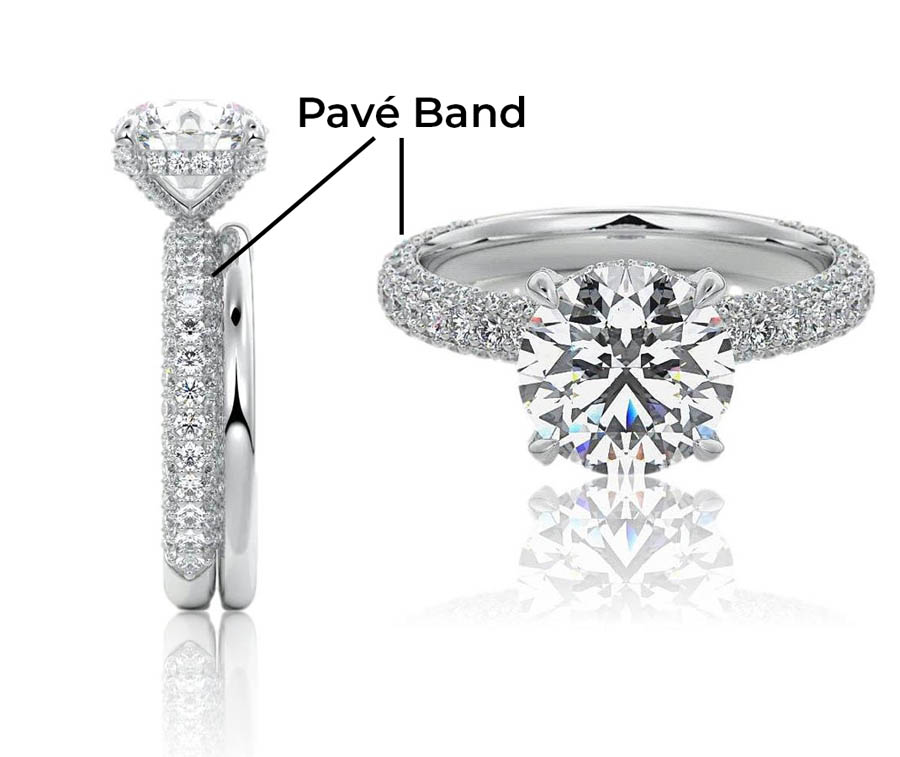
Round cut, moissanite engagement ring with Pavé band
Halo – is a ring, or border of smaller stones around the outside of the main stone, forming a ‘halo’. Not only are they super sparkly, but if it’s the same colour as the main stone, it gives the illusion of it being bigger, while if it’s a different colour, it draws the eye to the centre stone – a stunning and timeless feature.

Round cut, moissanite engagement ring with halo // Lab-grown ruby engagement ring with halo
Hidden halo – similar to above, a hidden halo’s a frame of smaller stones, but they aren’t instantly noticeable when looking at the ring from the top. The circle of gems are set around the base of the main stone, visible when viewing the ring from the side.
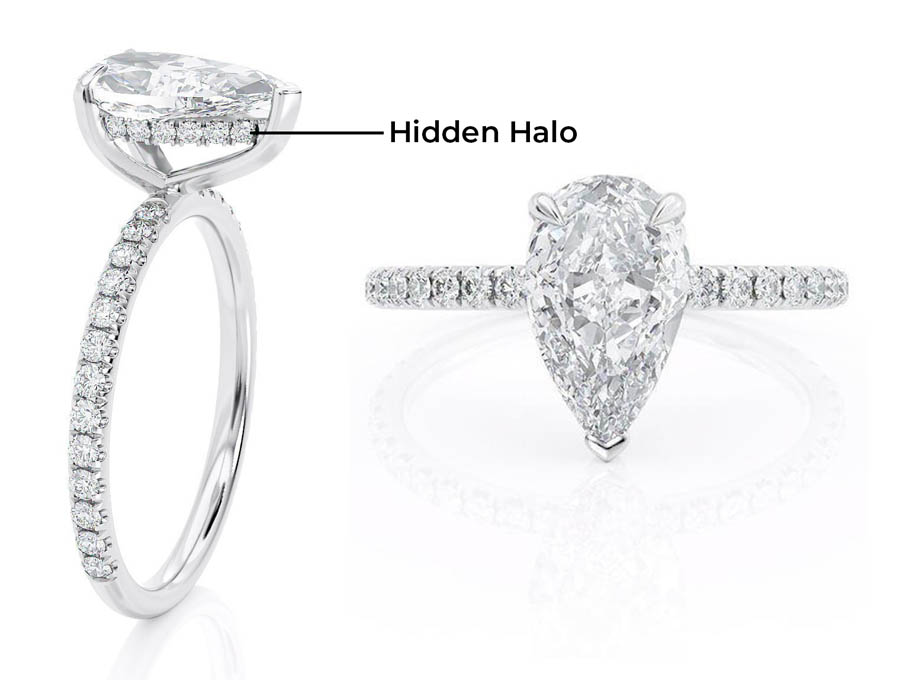
Pear cut moissanite engagement ring with hidden halo
Solitaire – as the name suggests, this ring contains a single gemstone of any cut. A solitaire ring is the most classic and timeless engagement ring style.
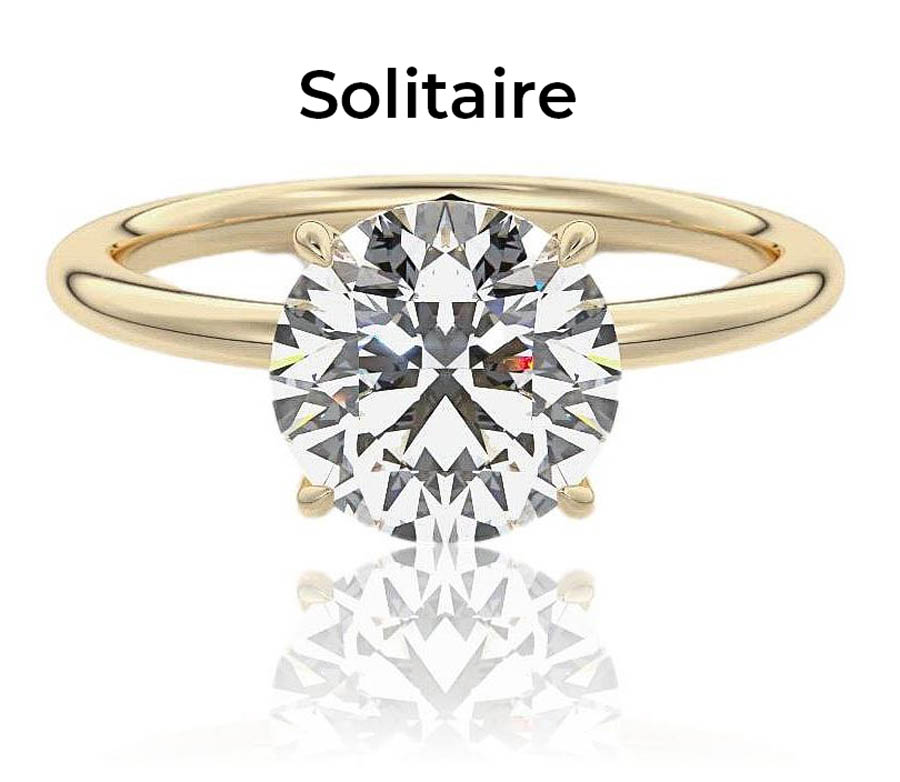
Round cut solitaire, lab-diamond engagement ring
Channel – stones are set inside a channel of metal, so they’re flush and not protruding, giving a smooth and clean finish. Channels are particularly popular for wedding bands.

Moissanite engagement ring, with channel set shoulders
Tiffany-style setting – characteristics include simple prongs that hold the main stone in place. The prongs use less metal, covering less of the gem, exposing more of the diamond and allowing more light to enter and exit the stone, which results in maximum sparkle.
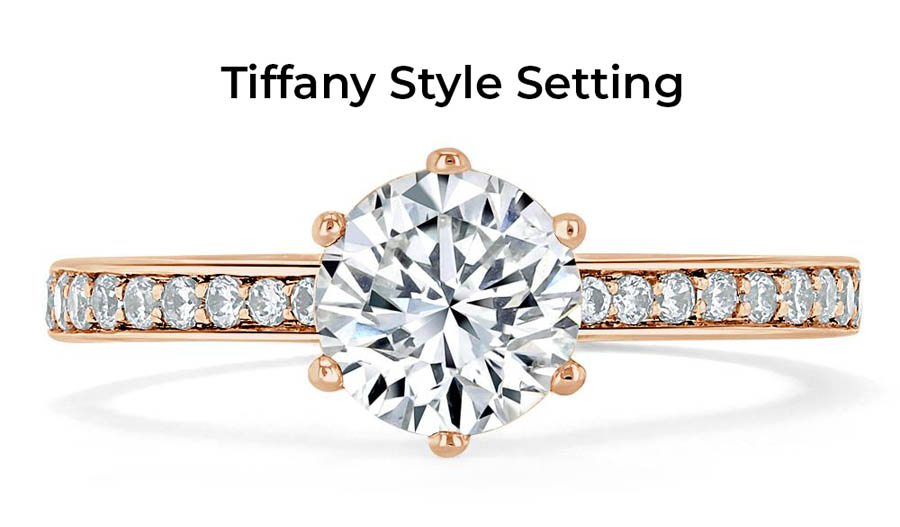
Round cut moissanite engagement ring, Tiffany-style setting
Milgrain – is a metalwork technique of small bumps, creating a patterned border. Milgrain is a popular design feature on both engagement and wedding rings and adds a lovely finish.

Oval cut lab-diamond engagement ring with milgrain edge




0 Comments